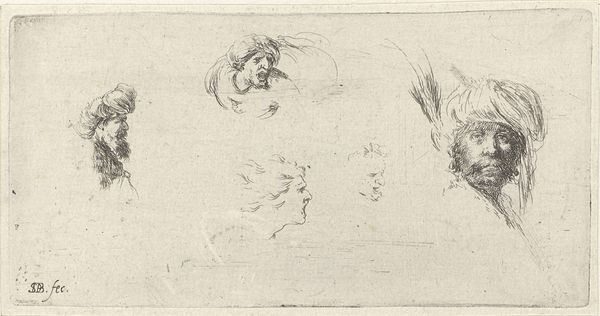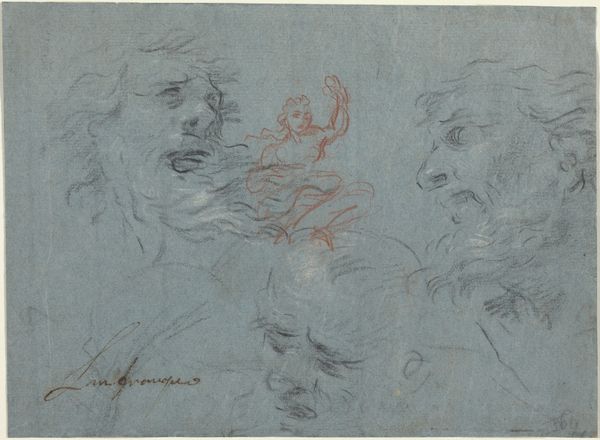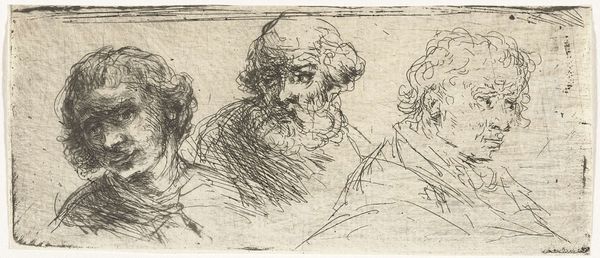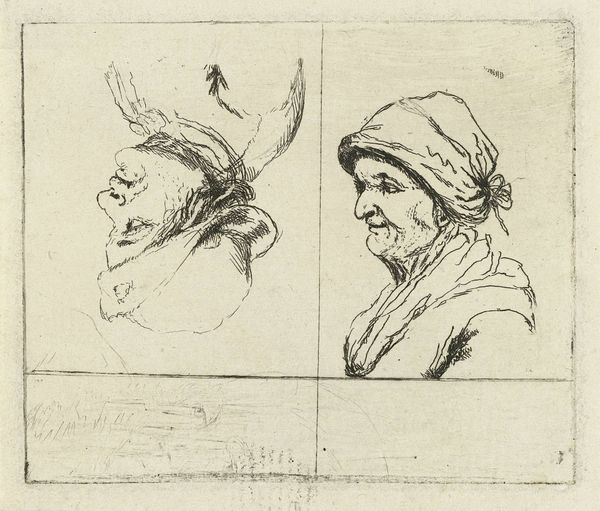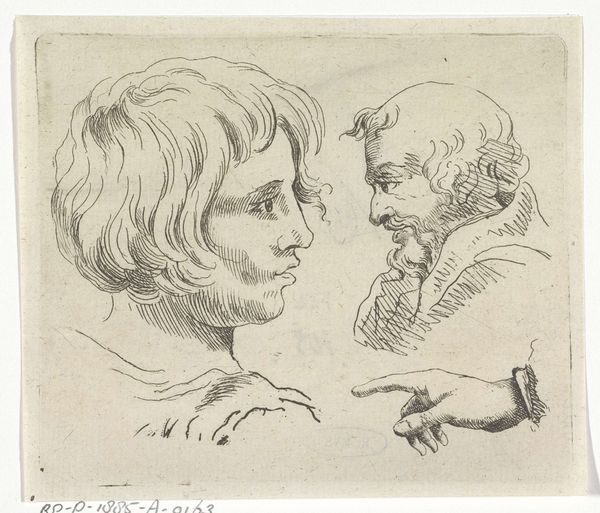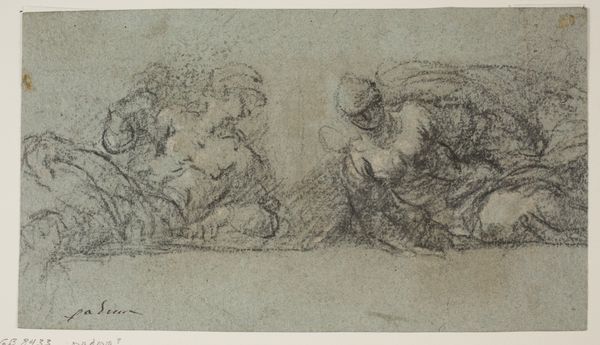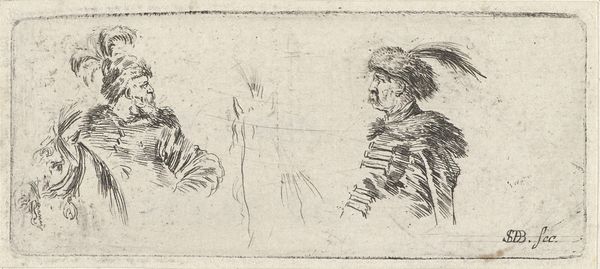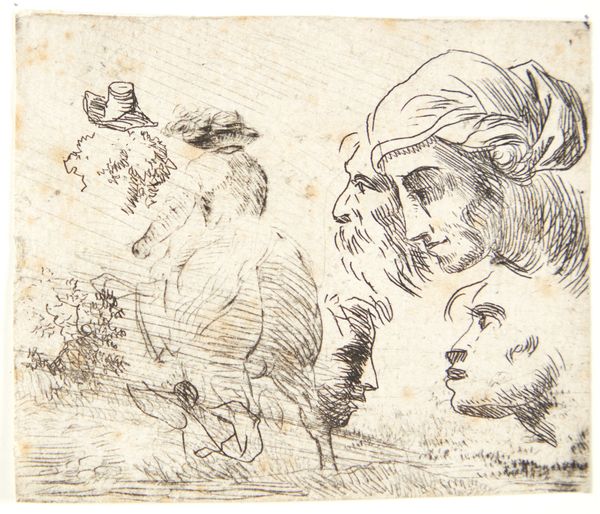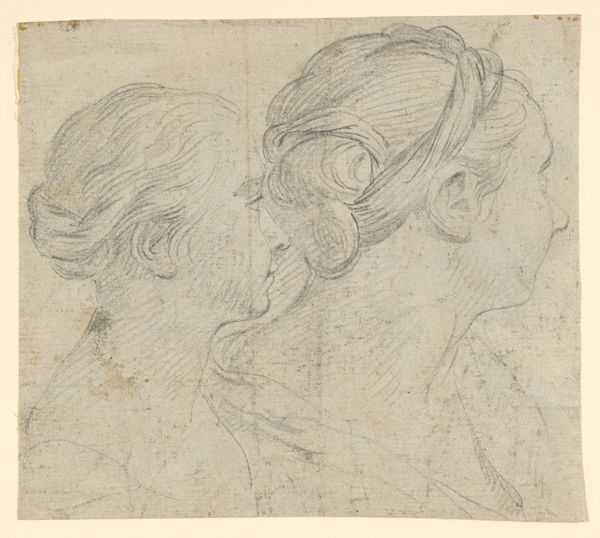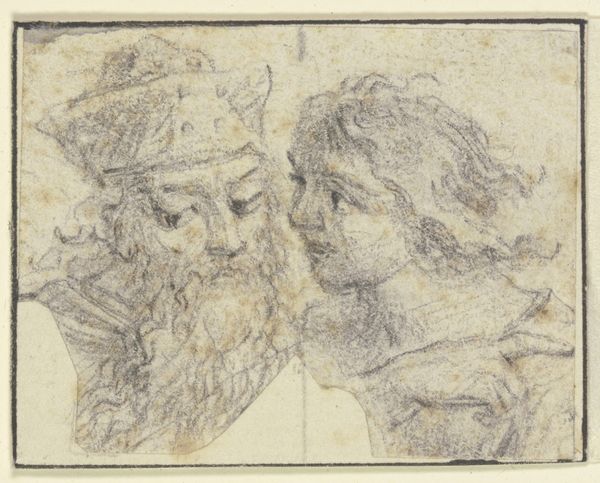
Twee bustes van mannen, een vrouw op een paard, een paardenhoofd, een staande man en een zittende vrouw 1620 - 1664
0:00
0:00
stefanodellabella
Rijksmuseum
drawing, ink, pen
#
portrait
#
drawing
#
baroque
#
figuration
#
ink
#
pen-ink sketch
#
horse
#
sketchbook drawing
#
pen
Dimensions: height 38 mm, width 90 mm
Copyright: Rijks Museum: Open Domain
This print, made by Stefano della Bella sometime in the 17th century, shows us what can be done with the simplest of means. The process used was etching, an intaglio printmaking technique that relies on the corrosive power of acid to create lines in a metal plate. Here, the artist would have coated a copper plate with a waxy, acid-resistant ground, then scratched an image into it with a fine needle, exposing the metal beneath. When the plate was immersed in acid, the exposed lines would be bitten, creating grooves. Ink was then applied to the plate, and the surface wiped clean, leaving ink only in the etched lines, before being printed on paper. Look closely, and you will see the linear quality of the print, each mark precisely placed with care. In terms of labor, this print speaks of the skilled hand, the trained eye, and the artist's capacity to envision entire worlds in miniature. It challenges traditional notions of art by elevating technical skill and the beauty of simple materials.
Comments
No comments
Be the first to comment and join the conversation on the ultimate creative platform.
